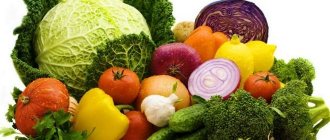Why is nutrition so important for atopic dermatitis?
The main causes of atopic skin rash include poor nutrition.
Some people have intolerance to certain foods and food allergies occur, which triggers an allergic reaction and the appearance of dermatitis. Various studies have found that in most patients diagnosed with atopic dermatitis, diet alleviates the symptoms of the disease and helps control the course of the disease. This occurs due to the fact that foods that can cause an allergic reaction are excluded from the diet. At the same time, the diet itself becomes more moderate, healthy and varied.
Epidemiology
Atopic dermatitis (AD), often referred to as eczema, is a recurrent, itchy, inflammatory skin condition that affects 1–22% of children and adolescents worldwide and about 11% of children in the United States. Over the past decade, the incidence of AD has increased markedly. The number of BP-related visits increased from 620,000 in 1997 to 1.7 million in 2003.
Pathophysiology of atopic dermatitis
AD is often placed within the group of atopic diseases, along with asthma and allergic rhinitis. The traditional model of disease pathophysiology describes hypersensitive immunological reactivity of mast and dendritic cells, increased immunoglobulin E (IgE), and a shift in response to environmental triggers towards T helper type 2 (Th2) cells. The pattern of skin hypersensitivity in AD is similar to the pattern of airway sensitization in asthma.
Today it is believed that AD is caused by a disorder of the epidermal barrier structure and function, and not a consequence of immunological hypersensitivity, as was previously thought. Disruption of the epidermal barrier is considered to be a major driving force behind the subsequent release of proinflammatory mediators. Fillagrin gene defects (FLG) are at the center of this mechanism. Individuals with FLG gene mutations are prone to at least dry skin even in the absence of clinical signs of eczema, and are likely to develop AD by 3 months of age. In addition to the association with AD, defects in the FLG genes also increase the risk of allergic sensitization, allergic rhinitis, and asthma. Thus, the current understanding of the pathophysiology of AD represents a complex interaction between genetics, skin barrier structure and function, and increased sensitivity to environmental insults. Children with a genetic predisposition to specific exposures are at increased risk of developing AD.
Clinical signs
In most patients with AD, the disease debuts before the age of 7 years, and spontaneous recovery in adulthood occurs in almost 40% of patients. Dermatosis manifests itself as dry skin, itching, and secondary skin changes resulting from chronic rubbing or scratching. The type and location of lesions vary depending on the stage of the disease, often affecting the extensor surfaces of the limbs and cheeks in infants, in contrast to the flexor surfaces of the limbs and large skin folds in adolescents and adults. The most consistently confirmed diagnostic criteria for blood pressure were developed by a working group from the UK (Table 1):
| Table 1 UK. Diagnostic criteria for atopic dermatitis |
| To establish a diagnosis of AD in the presence of itchy skin, 3 or more of the following are required: |
|
* In children under 18 months of age - rashes on the cheeks and/or extensor surfaces of the extremities ** History of atopic diseases in first-degree relatives of the patient for children under 4 years of age *** Does not apply to children under 4 years of age
Association with allergic diseases
Allergic associations remain a common finding in many patients diagnosed with AD. Eichenfield et al found that 80% of children with AD eventually develop asthma and allergic rhinitis and recommended adherence to the guidelines used for the treatment of asthma for AD. In a study of children conducted in Japanese kindergartens, Fukiwake et al. found that elevated serum IgE levels, a history of maternal atopy, and a history of food allergies and asthma were associated with the development of AD in children under 6 months of age.
Association via diet
The relationship between blood pressure and food allergies has attracted much interest. In a study published this year from the International Study of Asthma and Allergies in Children (Isaac), consuming three or more servings of fast food was associated with the development of asthma, rhinoconjunctivitis and blood pressure. Food allergies can manifest themselves through various immunological mechanisms. In the skin they can progress acutely through an IgE-mediated response, or subacutely through a non-IgE-mediated mechanism. The cutaneous manifestations characteristic of food allergy AD are thought to be due to both IgE-mediated and non-IgE-mediated reactions. Thus, some reactions occur within minutes to hours after taking the drug, while others may take several days to appear. IgE-mediated sensitization to a food allergen is often assessed using a skin test (SPT) or a food-specific IgE test, the latter being less sensitive.
The prevalence of IgE-mediated food allergen sensitization in infants with eczema varies among populations. Garcia et al found food allergies in 61% in a study of 44 infants. The most common reaction is sensitization to chicken eggs. High levels of sensitization to wheat, soy and peanuts are commonly observed in other similar studies. Hill et al. found that among children with positive skin tests to food allergens, 56% had AD. Additionally, they noted that the prevalence of IgE sensitization was 69%. The relative risk of developing AD in an infant with IgE-mediated food allergy is 5.9.
Sensitization to a single food allergen will not necessarily lead to clinically significant food allergy. Positive skin tests that detect the presence of IgE antibodies have a predictive accuracy of 50%. Eller et al found large discrepancies between sensitization and confirmed food hypersensitivity. This study also showed that children with AD were no more IgE sensitive than healthy children, but did have more persistent reactions to stimuli. Based on these results, the authors recommended standardized oral tests to confirm food allergy in future studies. In another study, 32% of children had positive skin tests for food allergens, but only 18% showed clinical reactivity.
Elimination diet
A subset of patients with clinically significant food allergies may benefit from specific dietary restrictions. A systematic review (Cochrane) of nine randomized controlled trials concluded that eliminating egg from the diet in those who were positive for specific egg IgE was beneficial. Supplement elimination was studied in adult patients with AD, in which researchers restricted foods with preservatives such as sorbic acid and the dye tartrazine in the diets of study participants for 6 weeks. The results showed clinical improvement after removal of these nutritional additives.
Dietary supplements
Studies of various dietary supplements have found that evening primrose oil may be beneficial in those who have not used high-potency steroids. Another study showed the effectiveness of docosahexaenoic acid in reducing the severity of eczema. Fish oil, vitamin D, and vitamin E have shown improvement in symptoms in several randomized trials. However, the evidence was of questionable clinical significance because many of these studies had small numbers of participants and were of poor quality.
Conclusion
The pathophysiology of AD involves complex interactions between genetics, physiology, and the environment. The influence of food allergens implies a decisive role of environmental factors in the development and severity of AD. Several studies have shown that sensitization to food allergens is significantly associated with disease. In addition, clinically significant food allergies have been associated with IgE-mediated skin reactions. An elimination diet in patients with food allergies showed improvement in AD symptoms, while some dietary supplements reduced disease severity. These data suggest that diet and BP may be related through pathophysiological mechanisms. Future studies should continue to explore the specific mechanisms that contribute to these interactions to improve AD.
Principles of nutrition for atopic dermatitis in adults
If you or a loved one periodically develop atopic dermatitis, then diet is the first thing you should pay attention to. There are several basic rules that should be followed when drawing up a patient’s menu:
Compliance with drinking regime. The patient must drink at least 1.5 liters of water throughout the day; this volume does not include teas, soups and other liquid foods. Thanks to the flow of fluid in the body, metabolic processes are activated, toxins are released from cells and tissues, which sometimes provoke nonspecific allergic reactions. On average, men need to drink about 2.0 - 2.5 liters of water per day, for women this volume is reduced to 1.5 liters (the amount is calculated based on the fact that 30 ml of liquid is needed for every kilogram of body weight).
Fractional meals. The weight of one serving should be about 200 grams, the total number of meals per day should be 5-6 times. Fractional nutrition for atopic dermatitis in adults and children promotes a uniform intake of nutrients and vitamins into the body. This does not create an increased load on the digestive tract and eliminates excess nutrients, which can often provoke allergies.
Mandatory inclusion of protein in the diet. A diet for atopic dermatitis in adults involves a balanced diet, so you should not give up meat and dairy products. The only exception is cow's milk protein intolerance; in this situation, dairy and fermented milk products should be replaced with products of plant origin (soy milk, cheese, etc.). And varieties of meat with a high allergenic potential should be replaced with lean ones.
Inclusion of fats in the diet. A diet for atopic dermatitis in children must certainly contain plant and healthy animal fats. Polyunsaturated fatty acids Omega-3, Omega-6 and Omega-9 are especially valuable for the body. The main sources of these substances are fatty sea fish, but in the case of atopic dermatitis, preference should be given to herring, as well as vegetable oils: sunflower, olive, cottonseed, flaxseed, sesame.
It is advisable to develop a menu for the week for atopic dermatitis in advance. This way you can plan your diet and diversify your diet by including as many different dishes as possible. This is especially important when it comes to children and teenagers, since they don't like to eat the same thing every day.
Artificial feeding
Children on mixed and artificial feeding should reduce their intake of cow's milk protein as much as possible. It is necessary to ensure that the mixtures used are adapted; up to 1/3-1/2 of the daily diet can be fermented milk mixtures. In case of a pronounced reaction to milk, special formulas are used for children with allergies to cow's milk proteins or formulas recommended for polyvalent allergies (in particular, those prepared on the basis of soy).
Unfortunately, an allergy to cow's milk protein in 20-30% of cases is accompanied by a reaction to soy protein. In this case, mixtures based on protein hydrolysates are prescribed.
“Forbidden” foods for atopic dermatitis
Patients with frequent relapses of skin rashes need to carefully plan their menu and include only healthy foods that do not provoke an exacerbation of dermatitis. Potentially dangerous products that can provoke deterioration of the condition include several groups of products. Thus, a hypoallergenic diet for atopic dermatitis excludes the use of:
- some types of berries and fruits (strawberries, lemon, pomegranate, currants, cranberries);
- certain vegetables and herbs (eggplants, tomatoes, radishes, radishes are prohibited);
- most types of nuts (peanuts, almonds, hazelnuts and others are prohibited).
When creating a menu for atopic dermatitis, patients often strive to eat only natural products. Sugar is also subject to a general ban; instead, natural honey is being added to dishes for sweetness. This is a mistake, since absolutely all bee products are strong allergens. Even a healthy person should use them with caution, in moderation.
“Allowed” products for atopic dermatitis
If you look at the list of foods that are undesirable for patients with atopic dermatitis, it may come as a shock. In fact, not everything is so bad, and there is no need to be upset, since there is always the opportunity to find healthier, but no less enjoyable food alternatives.
The habits of any person can be corrected, and eating habits are no exception. Therefore, it is necessary to endure the first two to three weeks, then the body will adapt to the new diet, and you will begin to feel more alert, energetic, and healthy.
If you look at the list of diets for atopic dermatitis, in most of them patients are allowed to consume:
- lean meats (veal or beef, rabbit, turkey or chicken);
- fish (you should give preference to species with white meat, for example, herring species, the amount of salmon should be limited);
- almost all types of vegetables (especially valuable components of the diet for atopic dermatitis are white cabbage, cucumbers, zucchini and potatoes);
- some fruits and berries (bananas, green apples);
- fermented milk products (we are talking about kefir, cottage cheese and yogurt);
It is recommended to limit the amount of seasonings for atopic rash. You can add a little salt, black or red pepper. Vegetable oil with a small amount of soy sauce is suitable as a salad dressing.
There are also certain recommendations on how to prepare and consume dishes for atopic dermatitis:
- The most suitable way to prepare foods is to boil, bake, steam, grill or stew. In this case, all the beneficial substances in the original ingredients are preserved, and the load on the digestive system is reduced, which cannot be achieved by frying.
- Almost all types of cereals are allowed. Especially often, pearl barley, buckwheat, oatmeal and flaxseed porridge are included in the hypoallergenic diet for atopic dermatitis in children. It is better to cook them with water, since milk can provoke an allergic reaction. To improve the taste of the finished dish, you can add berries and fruits from the list of permitted products. But you should not put nuts, dried fruits or butter.
- Introduce new foods into the diet carefully. To prevent the development of an allergic reaction and prevent the appearance of skin rashes, it is recommended to introduce new foods into the diet carefully, adding them in small quantities. If there is no negative reaction, then you can further increase the amount of consumption (but always remember the principle of moderation and do not overeat).
- Use more vegetables. Vegetables should be used as the basis for the menu in hypoallergenic diets for atopic dermatitis in adults. They can serve as an independent dish, and are well suited as a side dish. They can be added to salads, stews, casseroles, eaten both raw and boiled, stewed. They are versatile, quite nutritious, and contain plenty of vitamins and fiber to support gut health.
Lure
You should not rush into complementary feeding if your child suffers from diathesis. The later complementary foods are introduced, the higher the likelihood that the baby’s digestive system and enzymes will “ripen” and the product will be absorbed normally. In any case, complementary foods should not be introduced before 5-6 months of age.
Complementary foods are introduced with extreme caution, recording the reaction to each new product in a special “food” diary. Each product is administered, starting with its minimum amount (half a teaspoon), gradually increasing (doubling) the dose and bringing it to the age norm over several weeks. If an allergic reaction occurs, the product is canceled (you can try to reintroduce it only after half a year).
It is recommended to start complementary feeding with vegetables that have a white or green color (primarily cauliflower, zucchini, broccoli) or gluten-free porridges (buckwheat, rice, corn). When introducing porridges and vegetable purees, they should be prepared not with milk, but with a mixture or vegetable broth suitable for the baby, and kefir (from 7 months) and other fermented milk products should be used for drinking.
After vegetables and cereals, fruits are introduced (green apple, pear, plum, etc.), then meat (starting with rabbit, turkey, lamb).
It has been proven that the condition of children with allergic diathesis worsens with excessive consumption of carbohydrates. Sugar in the diet should be replaced with fructose (in a ratio of 1 to 0.3, since fructose is sweeter).
Remember:
- a child can react not only to the product itself, but also to the fertilizers on which he grew up. That is why you should not be “tempted” by huge beautiful apples that require a large amount of fertilizers and pest control;
- When purchasing any product, think about basic questions - who made (grown) it and when, where it was stored, what the expiration dates are, etc.
- The baby may react to certain varieties of apples and pears, and calmly tolerate other varieties. So don't give up on these healthy foods, but continue to experiment with caution.
- If the manifestations of allergies intensify, remember what happened (what you ate) the day before - during the day. Write down, think, analyze.
Products that most often cause allergic reactions should be introduced last and very carefully. Depending on age, these include:
- Up to 1 year. The main allergens: cow's milk, or more precisely, cow's milk protein or milk sugar (lactose), purees and juices from orange or red fruits. Signs of diathesis: frequent and loose stools with foam or a greenish tint, abdominal pain, rash, redness on the cheeks.
- From 1 year to 3 years. Main allergens: citrus fruits, fruits and berries with a red color (strawberries, raspberries, cherries, peaches, etc.), cereals. Signs of diathesis: abnormal stool, sore throat, choking cough, itchy skin or rash.
- Over 3 years old. Main allergens: chocolate, cocoa, peanuts, crabs, shrimp, crayfish, fish, pickles, marinades and seasonings. Manifestations: rash or itchy skin.
Don’t worry that your child is “deprived” of candies and other sweets. With age, the functions of the liver and intestines, the child’s immune system improve, and atopic dermatitis goes away. By the age of 3-4 years, most children can eat almost all foods.
Atopic dermatitis in childhood: nutritional features
Since in most cases atopic skin rash occurs in newborns and children under two years of age, it is necessary to dwell separately on nutrition issues at this age.
As a rule, infants are highly dependent on how their mother eats. Therefore, if a skin reaction occurs in a child, a woman should pay attention to her diet and adjust it. If this is not possible, then you should choose a safe infant formula. It is best to opt for formulations based on hydrolyzed protein.
In case of chronic atopic dermatitis in children, complementary foods must be introduced very carefully:
- the optimal age for the first complementary feeding is 4-6 months;
- New foods should be added to the diet only during the period of remission of the disease, when the skin reaction can be monitored;
- the first complementary food should be monocomponent (that is, consist of one type of product);
- each new product is introduced into the child’s diet gradually, 1-2 weeks are given to adapt to it, other new products are not introduced into the child’s diet during this period;
- a new product is included in the child’s diet for the first time in an amount of no more than 5 ml (g), preferably in the morning feedings, in order to be able to assess its tolerability during the day (the appearance or intensification of skin rashes, changes in stool);
- in the absence of an allergic reaction, the volume of the new product is increased daily by 10 - 30 g until the age-appropriate volume of the dish is reached within 5 - 7 days;
- More often, the first complementary food is a monocomponent puree of light-colored vegetables: zucchini, squash, cauliflower, cabbage, Brussels sprouts, broccoli
- with low body weight, the first complementary food can be dairy-free, gluten-free porridge (buckwheat, corn, rice), then vegetables are introduced;
- the first fruit complementary food is pureed apples or light-colored pears;
- the use of complementary foods containing milk, sugar, preservatives, food colors and flavors, salt, and gluten is excluded.
The menu for children over the age of one year becomes more complicated. But even here, the use of highly allergenic foods should be avoided, culinary processing should be gentle, dyes and preservatives should be avoided, and it is important to monitor the child’s reaction to a new product.
The diet for atopic dermatitis in adolescents is no different from the principles of nutrition for adults. But difficulties can arise here, since teenagers tend to communicate with their peers and follow their example. It is important not just to forbid a child to eat what he wants, you need to explain with reason why he should not eat this or that product. When a teenager consciously refuses sweets, fast food, and soda, which can cause an exacerbation of atopic dermatitis, it is easier for him to control his diet and prevent breakdowns. This is an extremely important point that influences the psychosomatic manifestation of the disease.
Atopic dermatitis: causes
The first reason is hereditary predisposition. Can be passed on from parents. If both parents of a child had or still have some kind of allergy in childhood, then the likelihood of it developing in the child is very high. But in addition to the hereditary factor, the following play a huge role:
- Nutritional pattern of the expectant mother and newborn baby;
- Home conditions, the quality of drinking water and bathing water, the length of daylight hours, but most importantly - the child’s contact with natural sunlight (light passing through windows and double-glazed windows loses its beneficial properties);
- Prophylactic intake (or “non-administration”) of vitamin D;
- The use of antibiotics by a pregnant or nursing mother, as well as the frequent and not always rational use of antibiotics.
How to maintain a balance of proteins, fats and carbohydrates?
The diet for chronic atopic dermatitis is selected in such a way that the patient’s menu maintains a balance between the consumption of proteins, fats and carbohydrates. When the volume of one of these elements decreases, the body experiences a deficiency, which affects the functioning of all internal organs and systems. Such an “imbalance” can lead to exacerbation of chronic diseases, including the appearance of skin rashes.
To ensure the supply of necessary substances, the menu should include:
- Proteins in an amount of at least 30% of the total volume of incoming food. Protein (or protein) is the main building block for body tissues. For atopic dermatitis, it is especially necessary because it helps restore damaged skin. The main sources of protein are veal, rabbit and turkey meat, fish, and dairy products.
- Carbohydrates in an amount of at least 50% of the volume of daily food consumed. Carbohydrates become the main source of energy; they help keep the body in good shape. Also, many fruits and vegetables rich in carbohydrates contain essential fiber, which ensures the normal functioning of the gastrointestinal tract. You can get a large amount of carbohydrates from vegetables, fruits and cereals.
- Fats in an amount of at least 20% of the total food eaten per day. Thanks to fats, many vital processes in the body are supported; they are important elements in the production of hormones and the construction of cell membranes. Fats keep the skin healthy, it becomes firm and elastic, and its natural protective barrier is maintained. Depending on individual health conditions, doctors often insist on increasing fat intake by reducing the amount of carbohydrates. This is a perfectly acceptable compromise.
If, due to food intolerance, the patient is unable to achieve sufficient protein intake, then in this case it is recommended to include special hypoallergenic protein supplements in the nutrition plan.
Diet for atopic dermatitis: what is its importance?
The skin of a child or adult susceptible to any form of dermatitis suffers from excessive dryness, itching, cracks, peeling, redness, and small blistering rashes filled with exudate. If you scratch damaged areas of the skin, additional symptoms are added to the indicated symptoms: bacteria get into the scratching, which leads to the appearance of wounds and suppuration.
To increase the intervals of remission, it is necessary to follow all the recommendations of the attending physician. These include taking prescribed medications, performing local procedures aimed at improving the protective functions of the skin and restoring its hydrolipid balance, as well as strict adherence to the diet. Nutrition for dermatitis has its own characteristics, which everyone who is susceptible to any skin diseases should know about.
The cause of exacerbation of the disease does not always depend on the consumption of prohibited foods. However, they too often become triggers that cause an undesirable reaction, so the patient should not neglect the diet for skin dermatitis. Its goals are as follows:
- Reducing or completely eliminating allergenic foods from the menu.
- Removing harmful substances from the body.
- Complete provision of the body with vitamins, microelements, proteins, fats and carbohydrates necessary to restore the protective balance of the skin and improve its epithelization.
If the diet of patients with dermatitis does not bring positive results, and periods of remission are reduced, the cause of exacerbations may be caused not by nutrition, but by other factors. To detect them, a full examination is necessary.
Recipes for simple and affordable dishes for atopic dermatitis
The advantages of the diet recommended for patients with dermatitis boil down to the fact that their menu is quite simple, all dishes are easy and quick to prepare. In addition, by reducing their calorie content, weight loss can be achieved.
We recommend you several very satisfying, but at the same time healthy dishes.
- Stew with turkey and zucchini. To prepare, you will need 500 grams of zucchini (you can use squash, cauliflower or broccoli), 500 grams of turkey fillet and one leek. Cut all ingredients into large cubes, place in a saucepan, add a small amount of water and simmer over low heat. 10 minutes before readiness, pour in a tablespoon of vegetable oil, lightly add salt and add a tablespoon of sour cream. This is a hearty dish in itself, and also a good addition to any side dishes of buckwheat, potatoes, or rice.
- Veal with apples. The dish is prepared very simply from a minimum set of ingredients. You will need 500 grams of veal fillet, 2-3 green apples and a leek. Cut all the ingredients into small pieces (veal into cubes, apples into slices, leeks into rings), place in a fireproof bowl, lightly add salt and pepper, pour in a couple of tablespoons of vegetable oil and 100 ml of water. Bake in the oven at 180 degrees until done.
- Fruit and berry smoothie. When, due to dietary restrictions, you don’t have enough sweets, a smoothie will help out in this situation. It is prepared from a glass of kefir with the addition of any permitted berries and fruits (for example, banana or white currants). Just grind all the ingredients in a blender and your delicious smoothie is ready.
As you can see, a well-chosen diet for atopic dermatitis helps to increase the effectiveness of treatment, helps keep the disease under control and reduce the severity of its symptoms. At the same time, the menu remains varied and tasty.
Highly allergenic foods
The products that most often cause allergies include:
- Chicken eggs, chicken meat, cow's milk, mushrooms, citrus fruits (oranges, tangerines, grapefruits), pineapples, persimmons, melons, strawberries, raspberries, wild strawberries, black catfish, honey, chocolate and candies, nuts (especially peanuts), fish, seafood products , fish caviar, smoked products, sausages, canned products, dried fruits, sweet carbonated drinks, coffee, cocoa, products with a large number of chemical additives (preservatives, dyes, flavors, stabilizers), wheat, rye
When creating a hypoallergenic and elimination diet for atopic dermatitis in adults and children, they should be avoided without fail, especially in the case of nursing mothers.
Products of average allergic risk
Less likely to cause allergies are foods such as:
- Quail eggs, apricots, peaches, pomegranates, various berries (including red currants and cranberries), tomatoes, carrots, beets, legumes, including soybeans, seasonings, corn, buckwheat, potatoes, peas, pork, turkey, red apples, broccoli, oats , barley
When creating a menu for atopic dermatitis, they can be included in the diet in small quantities, carefully monitoring the condition of the skin after each meal. In case of deterioration, it is necessary to note in the food diary which foods caused the reaction in order to exclude them in the future.
Alkali-forming products (70–80%)
Alkali-forming products are products that help maintain the pH of the internal environment of the body at a slightly alkaline level, close to neutral, preventing a shift in acidity towards an acidic environment. It is the acidification of tissues that supports the chronic inflammatory process in the body, including on the skin, according to some scientists, therefore the inclusion of alkali-forming foods in the diet is necessary for atopic dermatitis. The most powerful alkaline foods include:
- Lemons, celery, lettuce, greens, cucumbers, radishes, beets, carrots, avocado, cabbage
Opposite foods, that is, those that cause acidification of tissues and can support chronic inflammation, include meat, especially fatty meats, fermented milk products based on cow's milk, cheeses, baked goods, sweets, chocolate, coffee, black tea, alcoholic products .
Authorized Products
The first courses are prepared in a weak vegetable broth without frying with the addition of garden herbs. The diet includes lean boiled (without skin) or stewed dietary meat of turkey, chicken or rabbit. As a side dish, it is allowed to use potatoes pre-soaked in water, boiled in water in the form of mashed potatoes or in separate pieces.
Among the cereals, the diet may include buckwheat, wheat and oatmeal. From the group and dairy products - low-fat fermented milk products, yogurt without additives, fresh low-fat cottage cheese. It is allowed to include bran/whole grain bread, dry biscuits, and durum wheat pasta in the diet.
Fats must include vegetable oils (sunflower or olive). Vegetables: cucumber, onion, lettuce, stewed/boiled zucchini, boiled or stewed cabbage.
Table of permitted products
| Proteins, g | Fats, g | Carbohydrates, g | Calories, kcal | |
Vegetables and greens | ||||
| eggplant | 1,2 | 0,1 | 4,5 | 24 |
| zucchini | 0,6 | 0,3 | 4,6 | 24 |
| cabbage | 1,8 | 0,1 | 4,7 | 27 |
| broccoli | 3,0 | 0,4 | 5,2 | 28 |
| Brussels sprouts | 4,8 | 0,0 | 8,0 | 43 |
| cauliflower | 2,5 | 0,3 | 5,4 | 30 |
| green onion | 1,3 | 0,0 | 4,6 | 19 |
| bulb onions | 1,4 | 0,0 | 10,4 | 41 |
| cucumbers | 0,8 | 0,1 | 2,8 | 15 |
| squash | 0,6 | 0,1 | 4,3 | 19 |
| parsley | 3,7 | 0,4 | 7,6 | 47 |
| salad | 1,2 | 0,3 | 1,3 | 12 |
| celery | 0,9 | 0,1 | 2,1 | 12 |
| soybeans | 34,9 | 17,3 | 17,3 | 381 |
| asparagus | 1,9 | 0,1 | 3,1 | 20 |
| Jerusalem artichoke | 2,1 | 0,1 | 12,8 | 61 |
| dill | 2,5 | 0,5 | 6,3 | 38 |
| beans | 7,8 | 0,5 | 21,5 | 123 |
| garlic | 6,5 | 0,5 | 29,9 | 143 |
| lentils | 24,0 | 1,5 | 42,7 | 284 |
Fruits | ||||
| pears | 0,4 | 0,3 | 10,9 | 42 |
| nectarine | 0,9 | 0,2 | 11,8 | 48 |
| peaches | 0,9 | 0,1 | 11,3 | 46 |
| apples | 0,4 | 0,4 | 9,8 | 47 |
Berries | ||||
| gooseberry | 0,7 | 0,2 | 12,0 | 43 |
| black currant | 1,0 | 0,4 | 7,3 | 44 |
Nuts and dried fruits | ||||
| flax seeds | 18,3 | 42,2 | 28,9 | 534 |
| sunflower seeds | 20,7 | 52,9 | 3,4 | 578 |
Cereals and porridges | ||||
| buckwheat (kernel) | 12,6 | 3,3 | 62,1 | 313 |
| semolina | 10,3 | 1,0 | 73,3 | 328 |
| oat groats | 12,3 | 6,1 | 59,5 | 342 |
| cereals | 11,9 | 7,2 | 69,3 | 366 |
| wheat bran | 15,1 | 3,8 | 53,6 | 296 |
Raw materials and seasonings | ||||
| basil | 2,5 | 0,6 | 4,3 | 27 |
Dairy | ||||
| dairy products | 3,2 | 6,5 | 4,1 | 117 |
| kefir 0% | 3,0 | 0,1 | 3,8 | 30 |
| kefir 1% | 2,8 | 1,0 | 4,0 | 40 |
Cheeses and cottage cheese | ||||
| cottage cheese 0.6% (low fat) | 18,0 | 0,6 | 1,8 | 88 |
| curd tofu | 8,1 | 4,2 | 0,6 | 73 |
Meat products | ||||
| boiled beef | 25,8 | 16,8 | 0,0 | 254 |
| beef stew | 16,8 | 18,3 | 0,0 | 232 |
Bird | ||||
| boiled chicken | 25,2 | 7,4 | 0,0 | 170 |
| steamed chicken breast | 23,6 | 1,9 | 0,0 | 113 |
| boiled turkey fillet | 25,0 | 1,0 | — | 130 |
Fish and seafood | ||||
| seaweed | 0,8 | 5,1 | 0,0 | 49 |
Oils and fats | ||||
| butter | 0,5 | 82,5 | 0,8 | 748 |
| linseed oil | 0,0 | 99,8 | 0,0 | 898 |
| olive oil | 0,0 | 99,8 | 0,0 | 898 |
| sunflower oil | 0,0 | 99,9 | 0,0 | 899 |
Non-alcoholic drinks | ||||
| mineral water | 0,0 | 0,0 | 0,0 | — |
| instant chicory | 0,1 | 0,0 | 2,8 | 11 |
| green tea | 0,0 | 0,0 | 0,0 | — |
Juices and compotes | ||||
| rose hip juice | 0,1 | 0,0 | 17,6 | 70 |
| * data is per 100 g of product | ||||
Alkali-forming products (20–30%)
In general, it is worth saying that almost all fruits, vegetables, herbs, spices, alkaline herbal tea, vegetable juices, whole milk, whey, oatmeal, fresh beans, potatoes with skin, any berries, dates, dried figs, almonds, raisins , prunes, and natural juices are classified as alkali-forming products.
Compliance with these simple recommendations, together with the use of effective topical therapy for atopic dermatitis, will reduce the frequency and severity of exacerbations and improve the general condition of patients.











